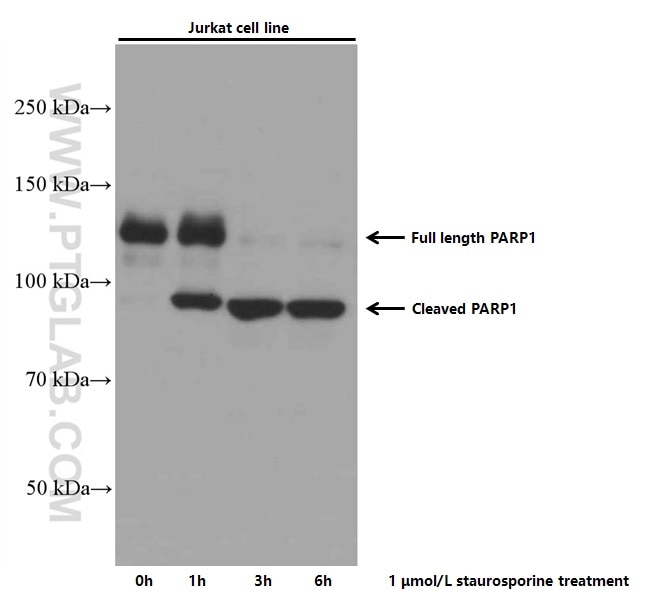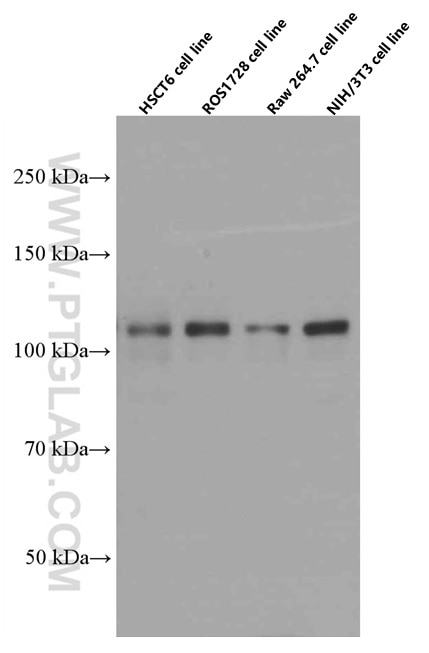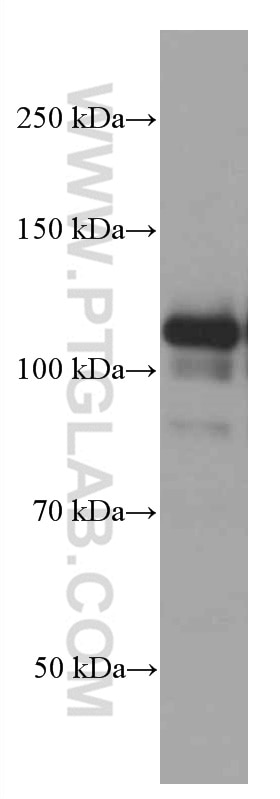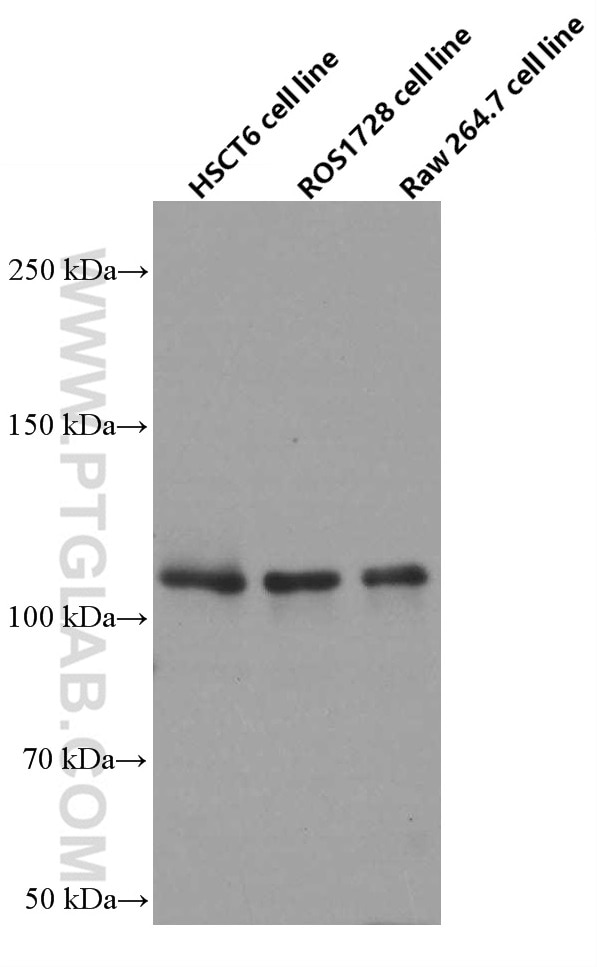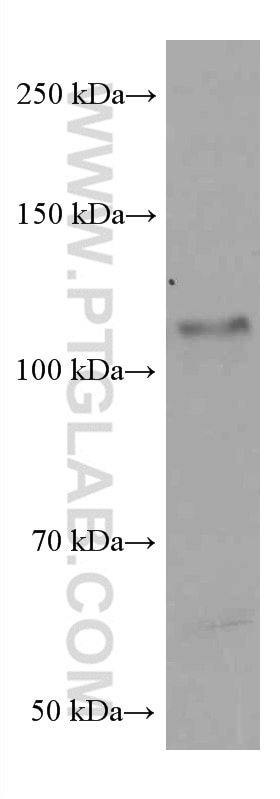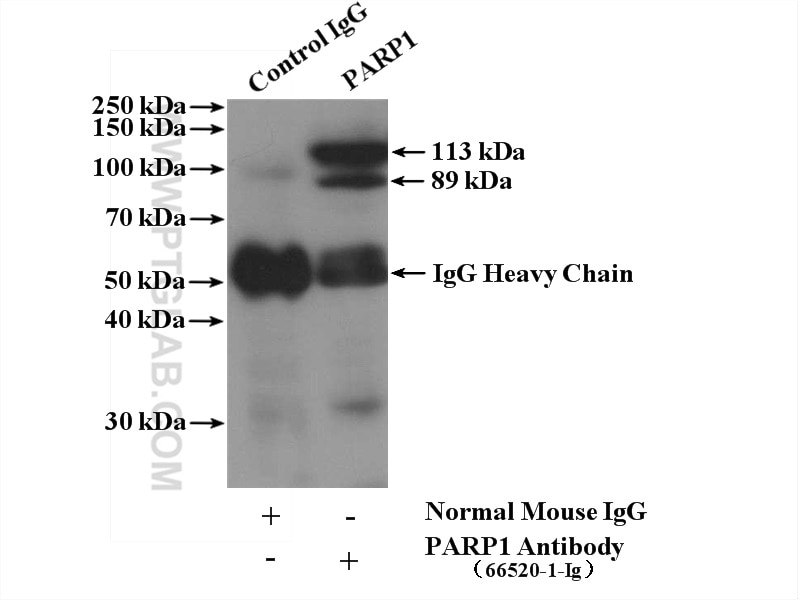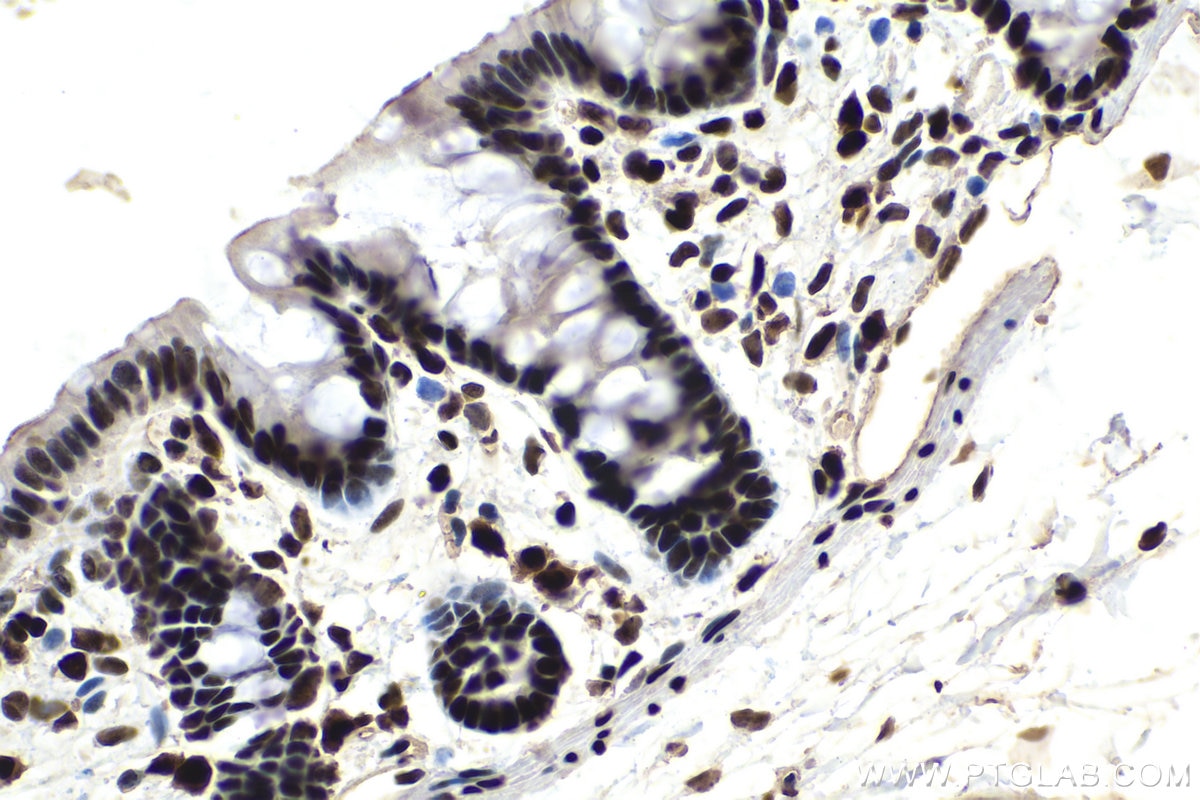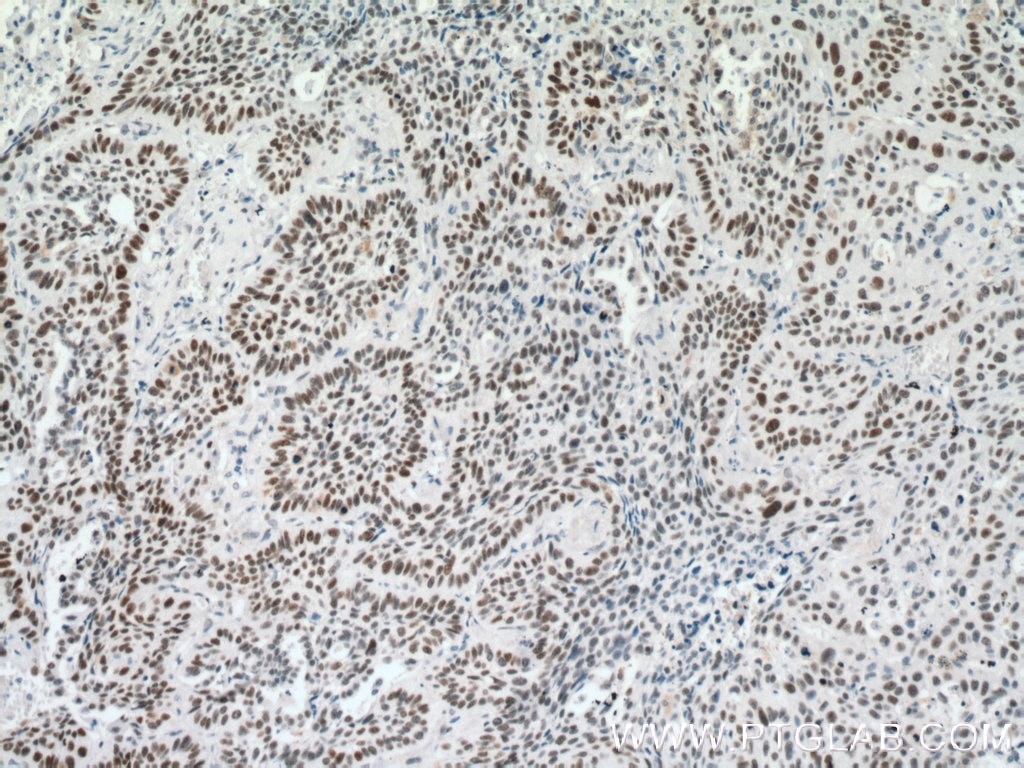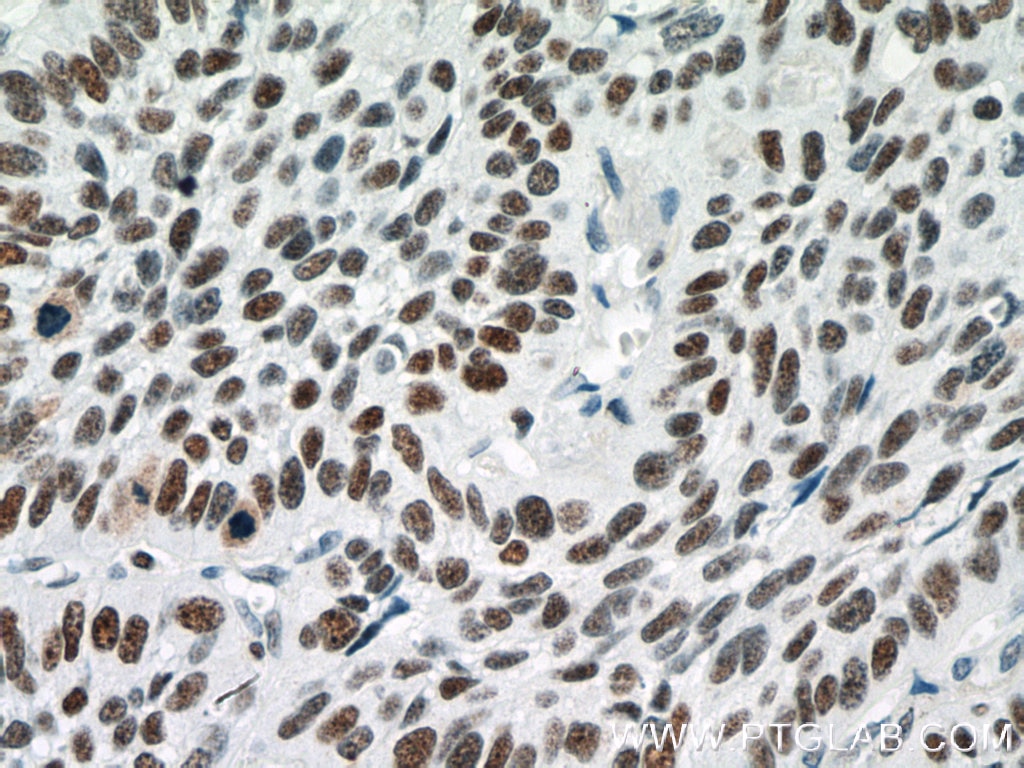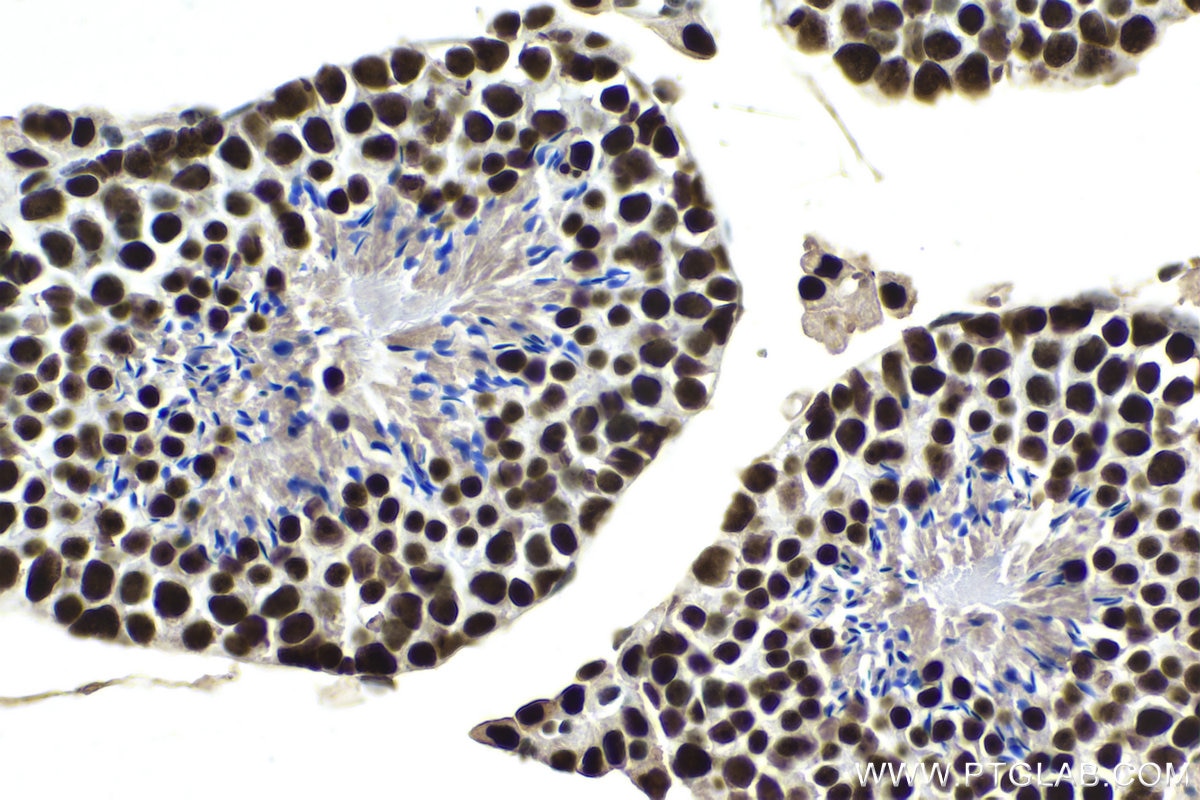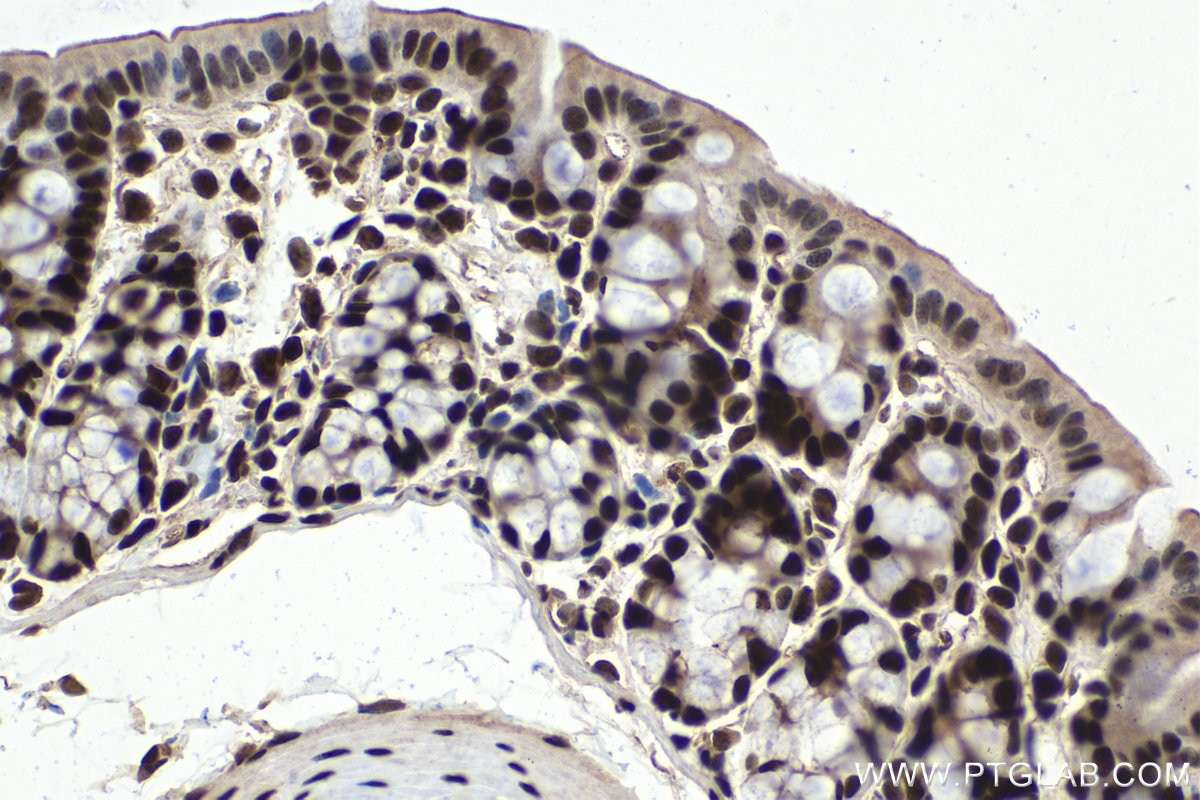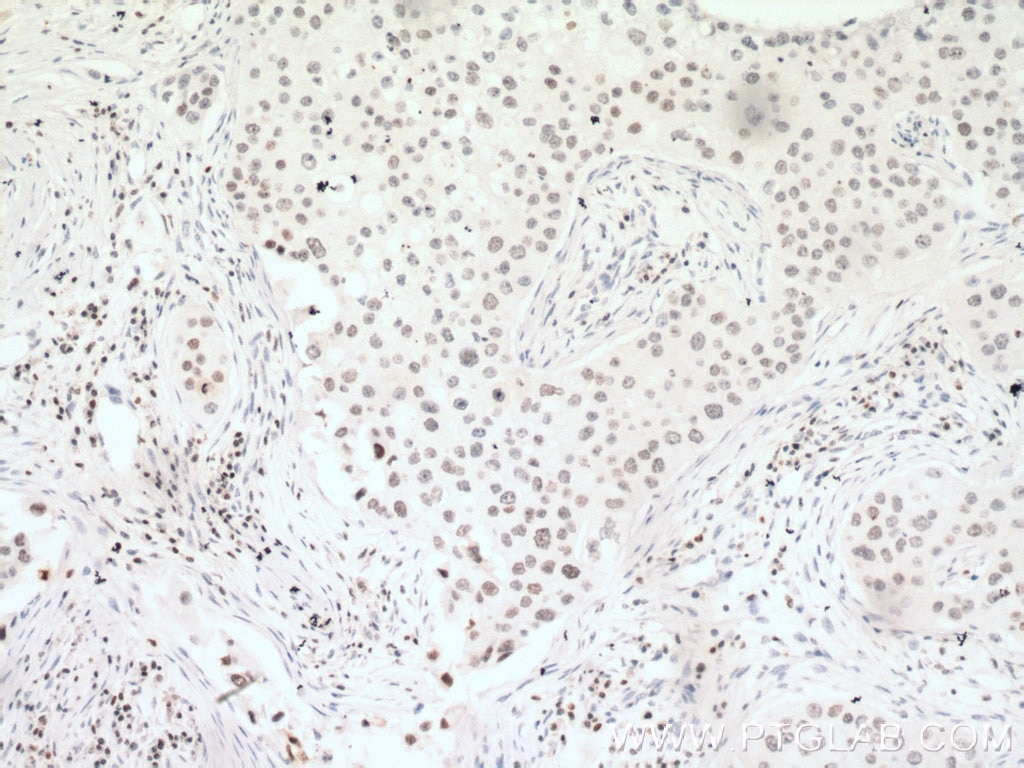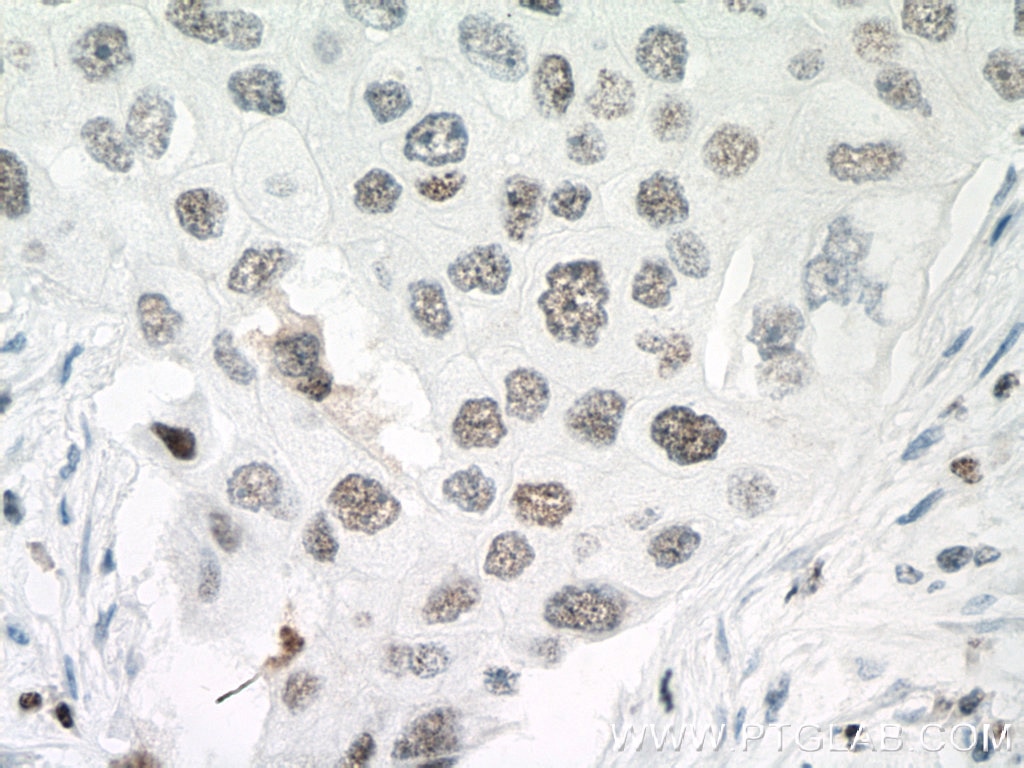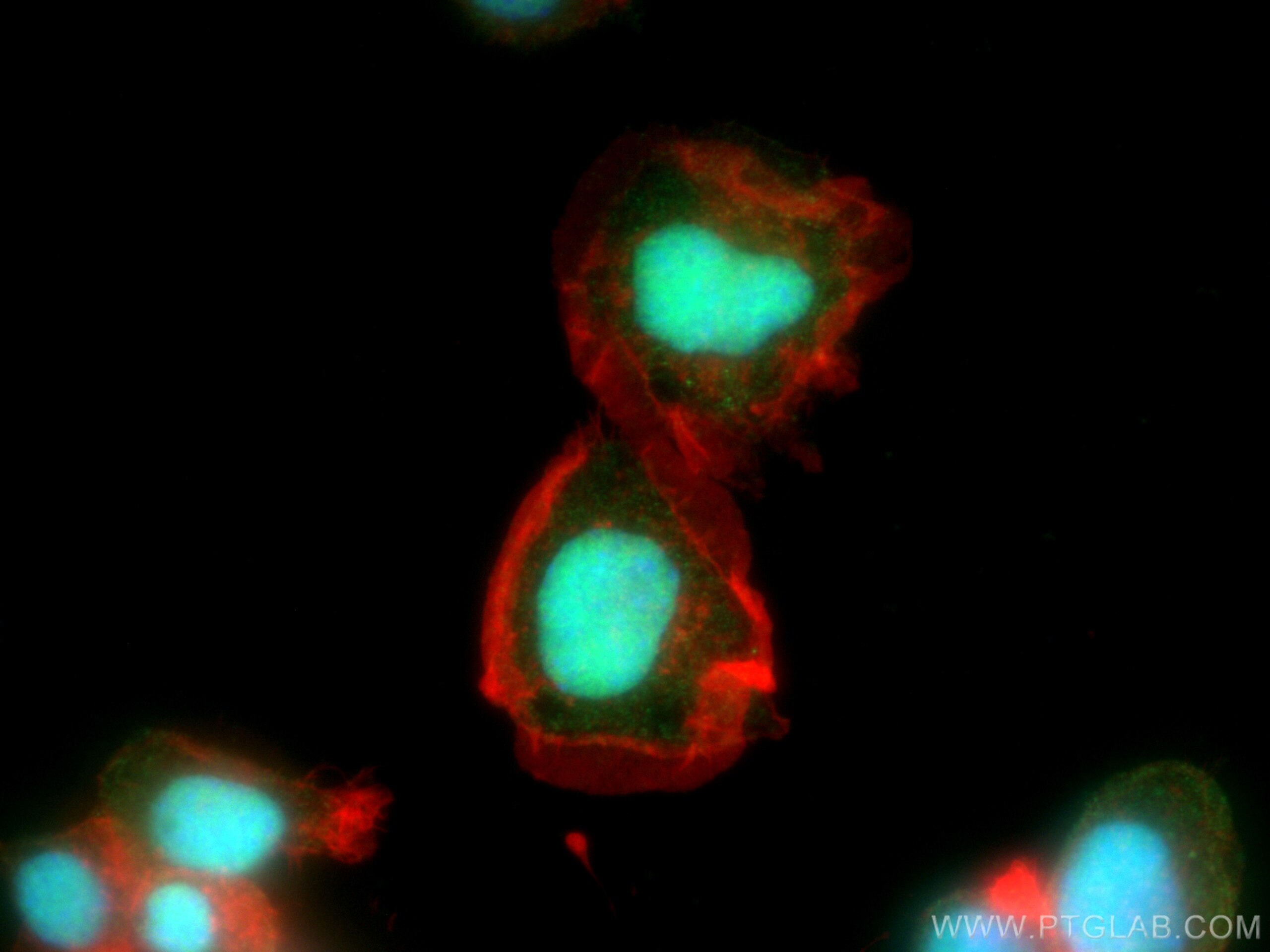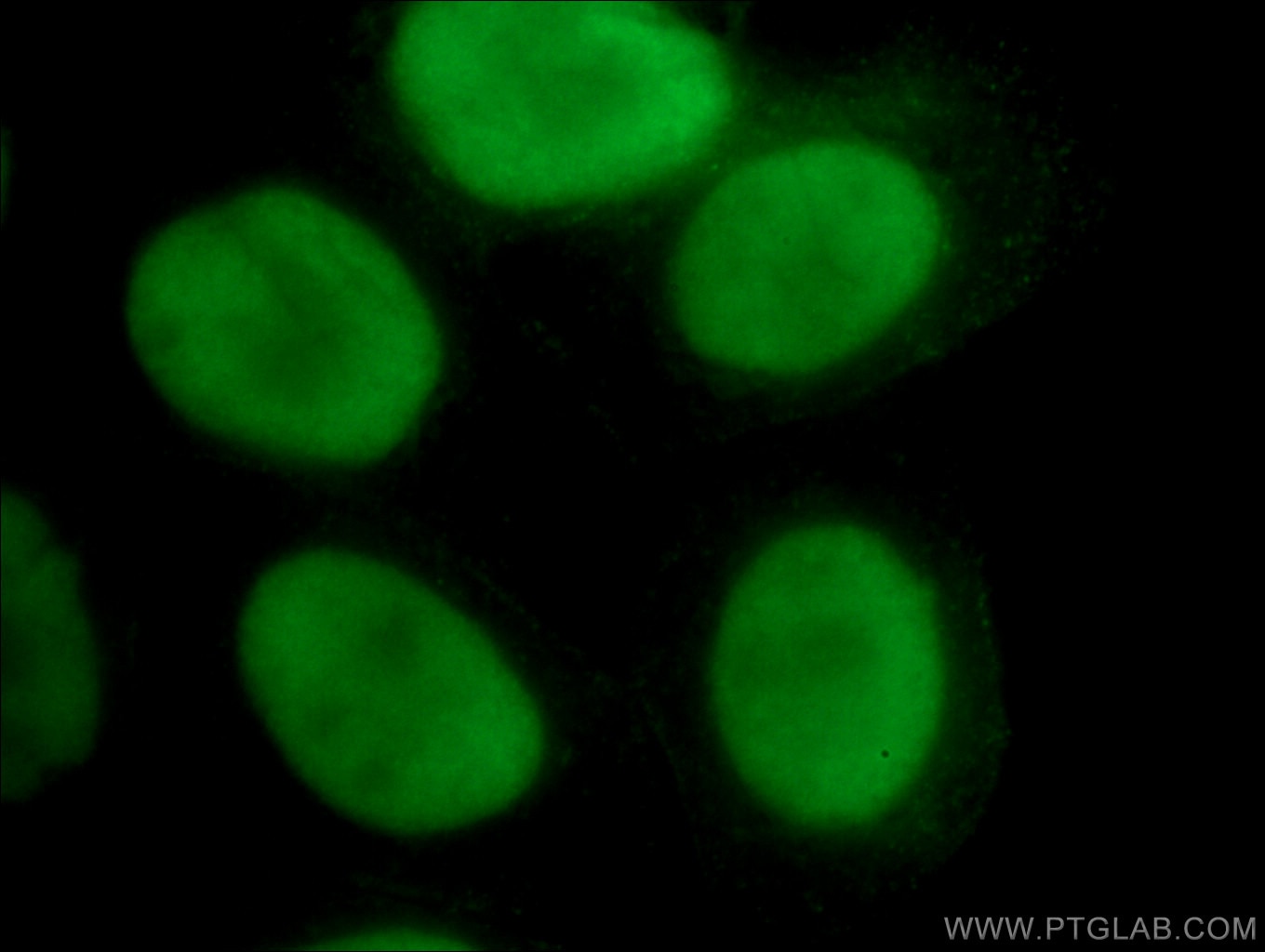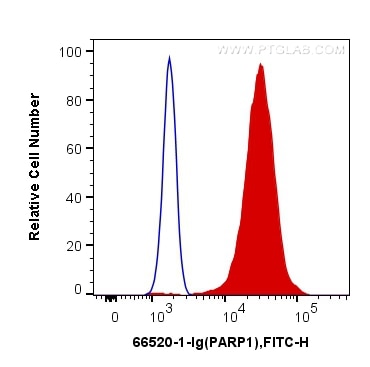- Featured Product
- KD/KO Validated
PARP1 Monoklonaler Antikörper
PARP1 Monoklonal Antikörper für FC (Intra), IF, IHC, IP, WB, ELISA
Wirt / Isotyp
Maus / IgG1
Getestete Reaktivität
human, Maus, Ratte und mehr (2)
Anwendung
WB, IP, IHC, IF, FC (Intra), CoIP, ELISA
Konjugation
Unkonjugiert
CloneNo.
1D7D4
Kat-Nr. : 66520-1-Ig
Synonyme
Galerie der Validierungsdaten
Geprüfte Anwendungen
| Erfolgreiche Detektion in WB | Jurkat-Zellen, HeLa-Zellen, NIH/3T3-Zellen, RAW 264.7-Zellen, ROS1728-Zellen |
| Erfolgreiche IP | K-562-Zellen |
| Erfolgreiche Detektion in IHC | humanes Lungenkarzinomgewebe, humanes Mammakarzinomgewebe, Maushodengewebe, Maus-Kolongewebe, Ratten-Kolongewebe Hinweis: Antigendemaskierung mit TE-Puffer pH 9,0 empfohlen. (*) Wahlweise kann die Antigendemaskierung auch mit Citratpuffer pH 6,0 erfolgen. |
| Erfolgreiche Detektion in IF | Neuro-2a-Zellen, HeLa-Zellen |
| Erfolgreiche Detektion in FC | HeLa-Zellen |
Empfohlene Verdünnung
| Anwendung | Verdünnung |
|---|---|
| Western Blot (WB) | WB : 1:5000-1:50000 |
| Immunpräzipitation (IP) | IP : 0.5-4.0 ug for 1.0-3.0 mg of total protein lysate |
| Immunhistochemie (IHC) | IHC : 1:100-1:1200 |
| Immunfluoreszenz (IF) | IF : 1:2000-1:8000 |
| Durchflusszytometrie (FC) | FC : 0.20 ug per 10^6 cells in a 100 µl suspension |
| It is recommended that this reagent should be titrated in each testing system to obtain optimal results. | |
| Sample-dependent, check data in validation data gallery | |
Veröffentlichte Anwendungen
| KD/KO | See 2 publications below |
| WB | See 71 publications below |
| IHC | See 3 publications below |
| IF | See 3 publications below |
| IP | See 5 publications below |
| CoIP | See 1 publications below |
Produktinformation
66520-1-Ig bindet in WB, IP, IHC, IF, FC (Intra), CoIP, ELISA PARP1 und zeigt Reaktivität mit human, Maus, Ratten
| Getestete Reaktivität | human, Maus, Ratte |
| In Publikationen genannte Reaktivität | human, Huhn, Maus, Ratte, Zebrafisch |
| Wirt / Isotyp | Maus / IgG1 |
| Klonalität | Monoklonal |
| Typ | Antikörper |
| Immunogen | PARP1 fusion protein Ag19173 |
| Vollständiger Name | poly (ADP-ribose) polymerase 1 |
| Berechnetes Molekulargewicht | 1014 aa, 113 kDa |
| Beobachtetes Molekulargewicht | 113-116 kDa, 85-89 kDa |
| GenBank-Zugangsnummer | BC037545 |
| Gene symbol | PARP1 |
| Gene ID (NCBI) | 142 |
| Konjugation | Unkonjugiert |
| Form | Liquid |
| Reinigungsmethode | Protein-G-Reinigung |
| Lagerungspuffer | PBS mit 0.02% Natriumazid und 50% Glycerin pH 7.3. |
| Lagerungsbedingungen | Bei -20°C lagern. Nach dem Versand ein Jahr lang stabil Aliquotieren ist bei -20oC Lagerung nicht notwendig. 20ul Größen enthalten 0,1% BSA. |
Hintergrundinformationen
PARP1 (poly(ADP-ribose) polymerase 1) is a nuclear enzyme catalyzing the poly(ADP-ribosyl)ation of many key proteins in vivo. The normal function of PARP1 is the routine repair of DNA damage. Activated by DNA strand breaks, the PARP1 is cleaved into an 85 to 89-kDa COOH-terminal fragment and a 24-kDa NH2-terminal peptide by caspases during the apoptotic process. The appearance of PARP fragments is commonly considered as an important biomarker of apoptosis. In addition to caspases, other proteases like calpains, cathepsins, granzymes and matrix metalloproteinases (MMPs) have also been reported to cleave PARP1 and gave rise to fragments ranging from 42-89-kDa. This antibody was generated against the N-terminal region of human PARP1 and it recognizes the full-length as well as the cleavage of the PARP1.
Protokolle
| Produktspezifische Protokolle | |
|---|---|
| WB protocol for PARP1 antibody 66520-1-Ig | Protokoll herunterladen |
| IHC protocol for PARP1 antibody 66520-1-Ig | Protokoll herunterladen |
| IF protocol for PARP1 antibody 66520-1-Ig | Protokoll herunterladen |
| IP protocol for PARP1 antibody 66520-1-Ig | Protokoll herunterladen |
| Standard-Protokolle | |
|---|---|
| Klicken Sie hier, um unsere Standardprotokolle anzuzeigen |
Publikationen
| Species | Application | Title |
|---|---|---|
Nat Commun Cis- and trans-resveratrol have opposite effects on histone serine-ADP-ribosylation and tyrosine induced neurodegeneration. | ||
Biomaterials Urinary exosomes-based Engineered Nanovectors for Homologously Targeted Chemo-Chemodynamic Prostate Cancer Therapy via abrogating IGFR/AKT/NF-kB/IkB signaling. | ||
Arthritis Rheumatol Association of the Polymorphism rs13259960 in SLEAR With Predisposition to Systemic Lupus Erythematosus. | ||
Cancer Lett UM-6 induces autophagy and apoptosis via the Hippo-YAP signaling pathway in cervical cancer. |
Rezensionen
The reviews below have been submitted by verified Proteintech customers who received an incentive forproviding their feedback.
FH Hadil (Verified Customer) (05-23-2023) | This antibody is a great choice, delivering strong signals and enhanced specificity. It has low background noise, ensuring accurate results. Its efficiency saves valuable time, making it a reliable and versatile tool for various applications. A must-have for researchers seeking reliable and efficient antibody performance.
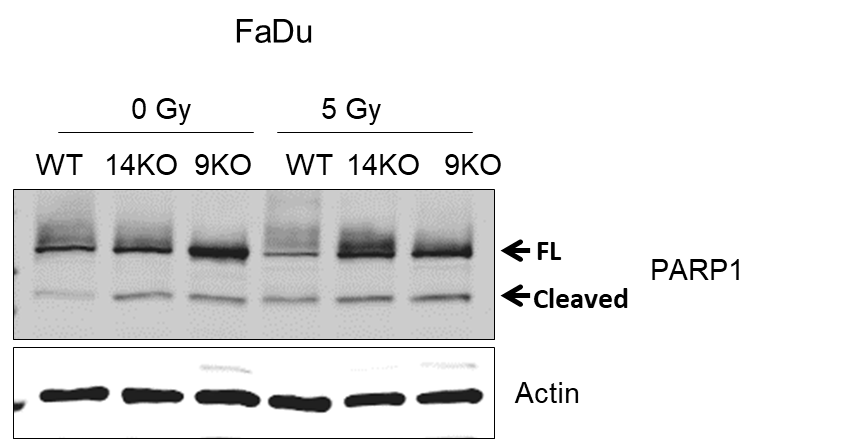 |
FH Carly (Verified Customer) (11-17-2020) | Tested using EDTA plasma on an antibody microarray
|
FH MANOHAR (Verified Customer) (12-11-2019) | No nonspecific binding
|
